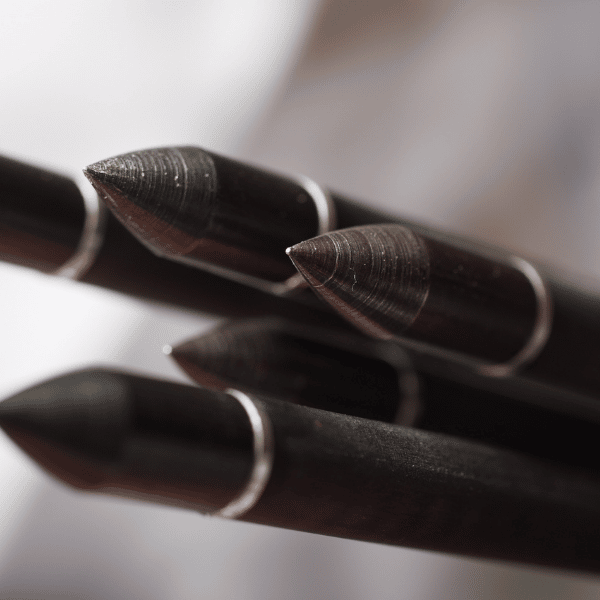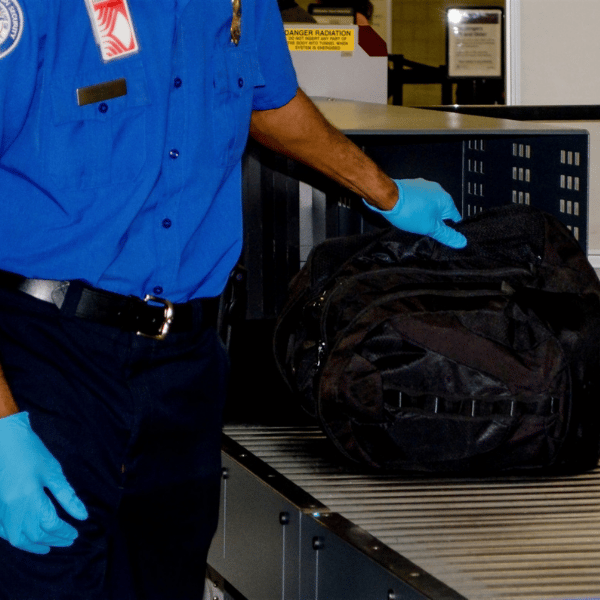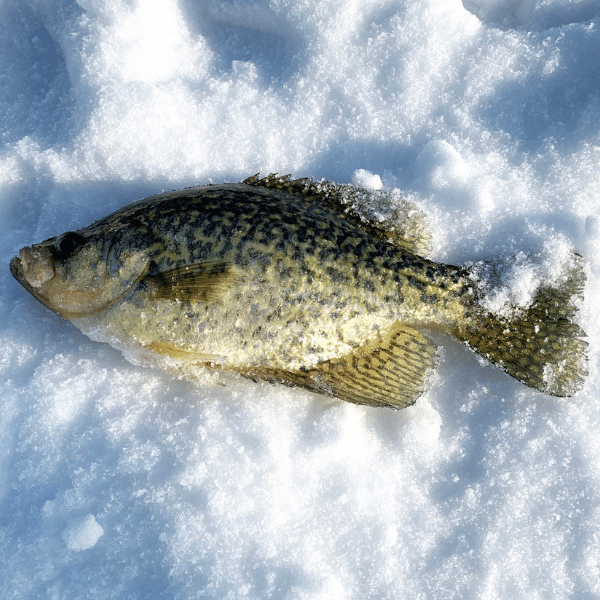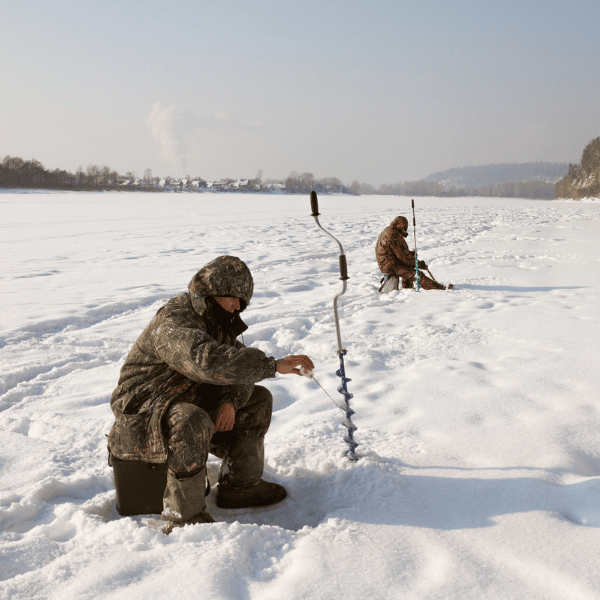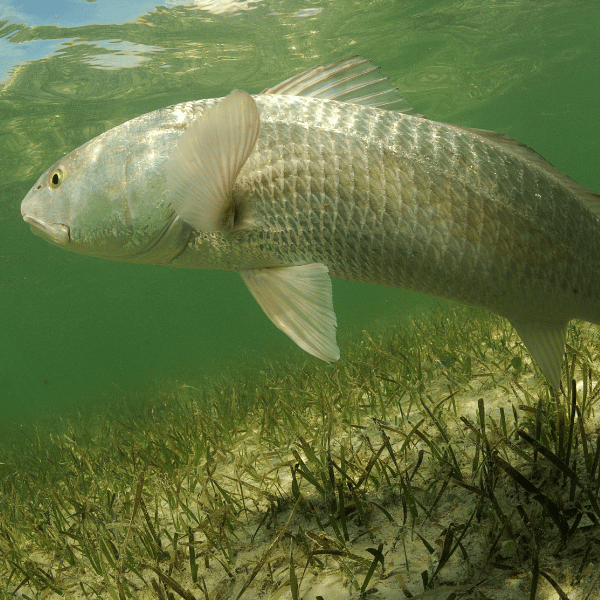Fly Fishing for Trout in Cold Weather (Fall & Winter)
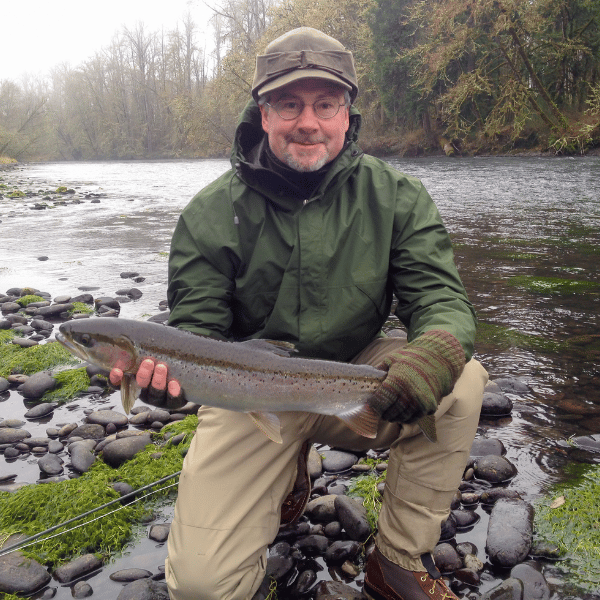
If you’re serious about fishing, fly fishing for trout in cold weather can be an exciting activity in the fall and winter. Trout will be biting any time of year, but fly fishing for trout in the fall and fly fishing for trout in winter can provide some different challenges.
In this guide, we go through the basics of fly fishing for trout in cold weather, including cold-weather trout fly fishing gear, tackle, and strategies.
Contents
Cold Weather Trout Fly Fishing Gear Essentials
Besides the normal equipment of rod and reel and plenty of flies for the entire trip, you’ll need a few extra essentials to make it through your cold-weather fly fishing trip.
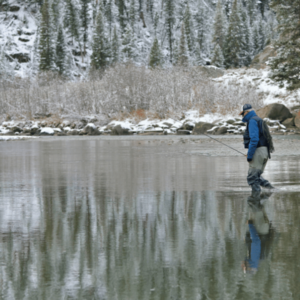
Just like any cold-weather expedition, you want to be sure you focus on your safety and comfort first. Start by making sure you have all of the essential layers beginning with a good pair of long underwear and thermal socks. If you’re going to be slogging through snow and standing in icy waters in waders you want to be sure your base layers are made of quality materials that will help you retain heat.
Braving the cold weather is all about high-performing layers and some of the hardest working ones on a cold-weather fly fishing trip are your go-to sweater and your fleece pants. Both items will help you retain heat while you’re standing in waders all day hoping and working toward a bite from a trout.
Next, you’ll want to be sure you’ve invested in some neoprene waders. They’re inexpensive and give you a warm barrier against any cold environment. Top all of your gear off with a thin down jacket or parka, fingerless or half-finger gloves, and a head sock or wool hat. All of these layers will keep you warm and cozy even if you spend all day in less-than-ideal climes.
Your fishing gear will need a little helping hand as well! When wet lines run through metal guides on sub-freezing days the lines will ice up fast. You can prevent this from happening with a cheap tube of lip balm like Chap-stick. Just put some on your fingers and lay down a layer on each guide. This will help keep ice-ups from happening regularly.
Fly Fishing for Trout in the Fall
Most temperatures won’t have dropped precipitously in the mid to late fall but you’ll want to change up a few things about the way you fish to make your trip successful.
Fall fishing can seem like a bust from the start with streams and lakes dried up from months of summer weather or blown out by autumn storms. The cooling water can give trout a little boost and they are fed well during the fall meaning they pack on a lot of weight and grow considerably. The insects are still hatching and trout rise to meet them making the fall a great time to hit the water.
The cooling weather means that trout rise to the surface less and less so you’ll need to switch from dry flies to spinners and other types of bait. There are a few mayfly species that still interact during this time and you might get a bite with Parachute-style dry flies when out during the fall.
Rusty spinners work in any stream that has a population of mayflies and will work all season long. Spinners seem like an easy meal to trout and they’re more likely to take a chance on one any time of year. Orange Stimulators are also a great choice to imitate the October caddis. These are very simple flies that you can use at other times of the year as well.
Fly Fishing for Trout in Winter
Surprisingly, fly fishing for trout in the winter can be one of the most rewarding times to hit the water! Bundle up nice and tight with plenty of layers and you might find yourself with a record-breaker on your hands.
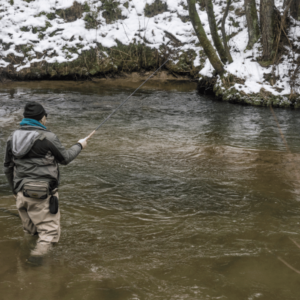
When you’re fly fishing in the winter you want to be sure you slow down, size down your flies, tone down the color of your flies, and present downstream. Each step will give you an advantage when you’re trying to lure a cold, slow-moving trout to your fly.
During the cold weather, trout physically become much slower and more lethargic so they won’t chase flies as aggressively as they would during the summer months. Your movements should become slowed down as well as the crystal clear waters make shadows more pronounced and trout get jumpy at any movement.
Size down your flies during the winter months and focus on nymph imitators. Midges become a vital source of food for trout during the winter months and to get their attention you need to be able to actively imitate them. Black stoneflies which are smaller during the winter, are another great insect to imitate when you’re heading out in the winter. Smaller size mimics the natural food source and can easily attract their attention.
Tone down the color of your flies. The bright colors on your fly or even on your person can indicate to a trout that something is off and they’ll swim off for safer waters. Use tans, browns, and greens on your body and in your flies to tone down the way trout see things.
Lastly, present downstream when you cast. During the regular summer fly fishing months, many fishermen make it a point to present from downstream to upstream. In the winter, it’s better to cast in a downstream direction. This allows the fish to drift down into your cast rather than swimming up to it actively. Your fly should drift directly into the feeding lane so the slow-moving trout won’t have to move to catch its prey.
Best Winter Flies for Trout
Just like you have to adjust the way you cast your fly during the winter months, you also need to rethink which flies to use while fishing for trout in the winter.
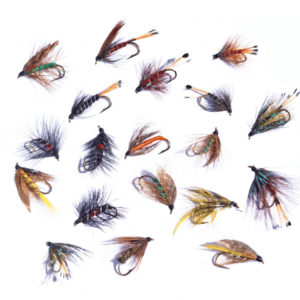
Fish during the winter can become fixated on singles which is where the Sipper Midge fly comes in. It can accurately imitate the way a hatching midge looks when it’s in profile or slips into a glare.
LaFontaine’s Buzzball is a great fly to use when you want to emulate the clusters of midges that gather after the hatching starts. It’s a fly that keeps catching fish on any river around the country.
With winter comes wind and the wind can keep clusters from forming along the water. When this happens, turn to the Tung Teaser for a fly and you’ll have all the bases covered from adult to larvae and pupae.
Dry-fly fishing can be hard to tackle in the winter and in that case you can turn to Pat’s Rubber Legs and a Frenchie. The Frenchie acts as an attractor pattern that can represent a lot of aquatic food and puts trout on the line fast.
Lastly, you can turn to a Complex Twist Bugger in whatever color and size you feel most confident. Keep the fly low and move it slowly as you go so you can focus on those deeper runs with a moderate to slow current.
For more information on the flies to use, check out our guide on fly fishing entomology.
Cold Weather Fly Fishing for Trout
If you’re ready to bundle up in your best layers and invest in a heavy-duty sweater, it might be time to take your chances on some cold weather fly fishing.
Trout do their most active feeding and living when temperatures are warm but in the off-season, they’re far less bothered by fishermen and take the bait more readily. Trying your hand at cold weather fly fishing is an excellent opportunity to snag a record-breaking fish without having to compete with your fellow fishermen.
When you head out to fly fish in the winter, you’ll need to bundle up and change your overall tactics slightly to account for the change in insect seasons. The trout during these winter months are less active in their feeding and will probably need you to drop the fly almost directly on their heads but with patience and perseverance, you can pull out some great ones.
Cold Weather Trout Fly Fishing FAQ
Fish slow down and become more lethargic as the weather dips down low but they’re active all year round. The biggest factor in whether it’s too cold to go fly fishing is your comfort. Many prefer the warmth of summer days to the snowstorms while winter fishing but you’re able to catch trout year-round.
Trout are most active in water temps from 52-64 degrees Fahrenheit. These bodies of water regularly hit those temperatures in late spring and throughout the summer. While they may be the most active during this time, trout are moving year-round so you can always head out in the snow for some late-season fishing!
